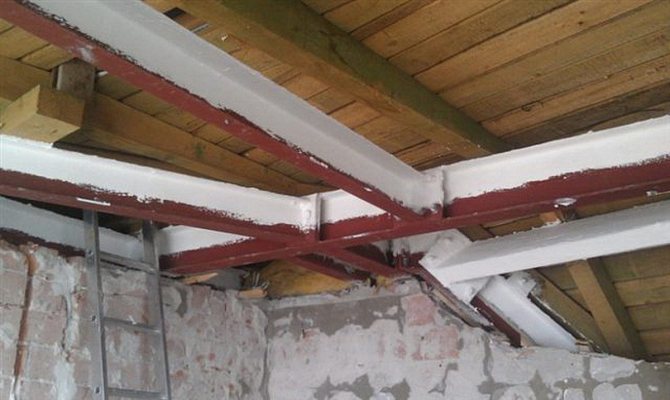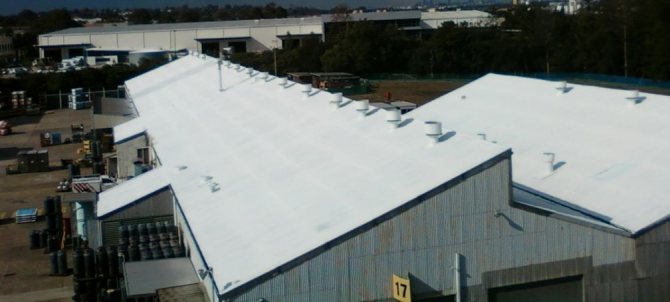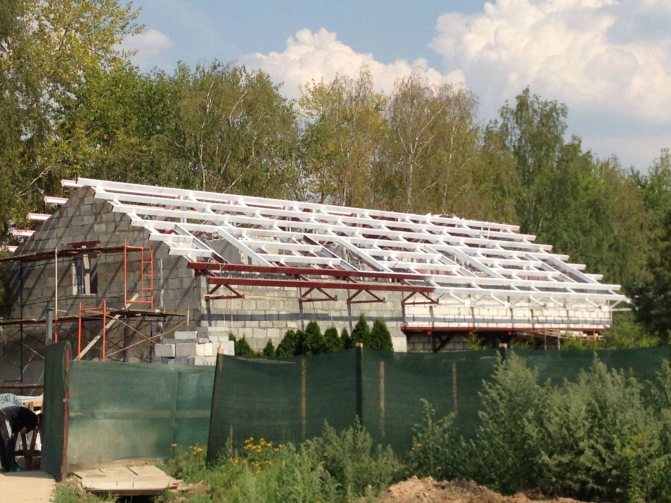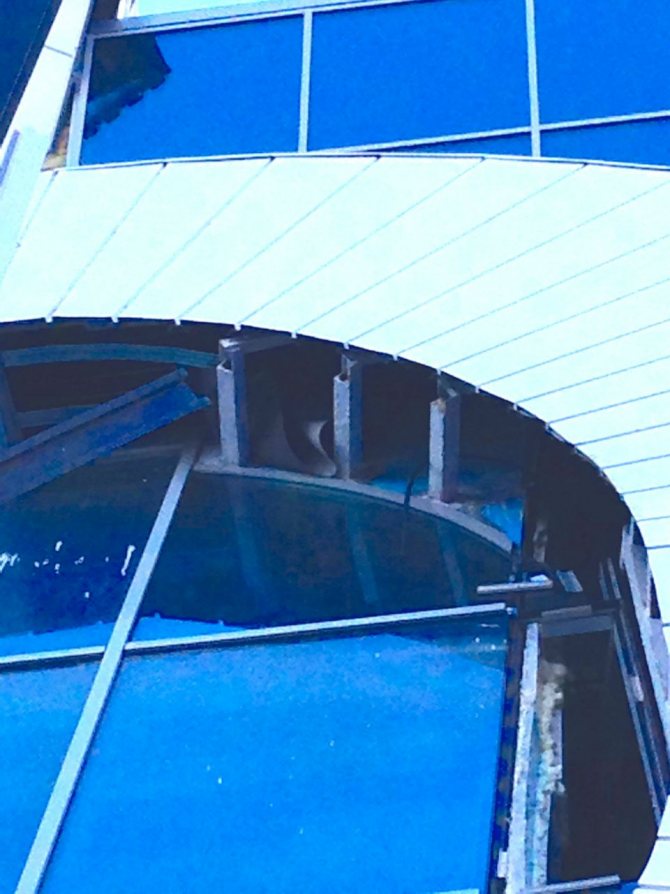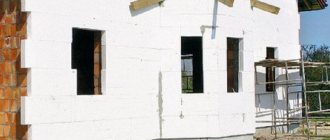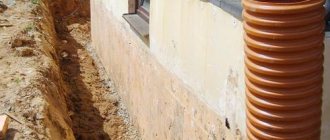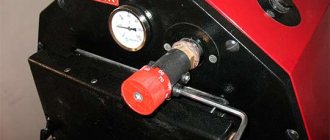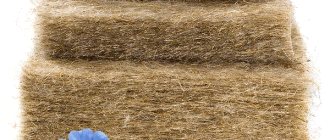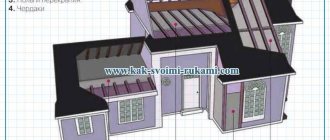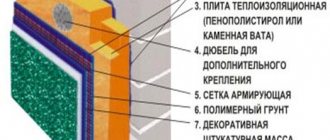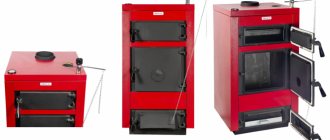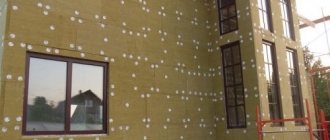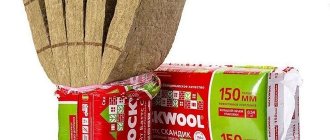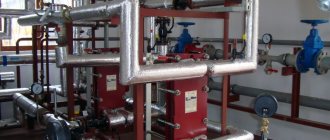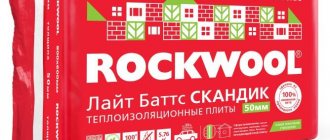Thermal insulation of metal structures
AKTERM Metal
The heat-and-energy-saving coating is used for thermal insulation of metal structures, tanks, containers, pipelines, furnaces with operating temperatures up to +200 ° С. Effectively reduces heat loss, eliminates condensation and freezing, protects against corrosion, improves the microclimate in boiler rooms, and ensures the safety of personnel from burns.
More details
AKTERM ® for metal structures and roofs.
Fire protection for steel structures
Fire protection BIZON
Bizon - production of coatings for fire protection of air ducts, metal and wooden structures, reinforced concrete, as well as fire doors, etc.
Fire protection BZTM
BZTM is a Russian brand for the production of heat-insulating and basalt fire-retardant materials
Fire protection KROZ
Fire protection KROZ is a large selection of modern fire-retardant materials to protect building structures from flames and fires. In you can buy KROZ fire protection in Moscow at competitive prices.
Fire protection of metal structures
The main goal of fire protection of buildings and structures is to increase their fire resistance limit, reduce the rate of fire propagation, and reduce smoke generation. Coming into contact with an open fire, elements of metal structures can quickly heat up, which leads to a decrease in their structural strength and deformation. Ultimately, the result can be the collapse of the supporting structures, which is fraught with human casualties and further spread of the fire. Therefore, when creating structures made of metal, it is necessary to provide for the possibility of increasing their fire resistance using certain means.
Fire protection of steel structures: main types
Currently, several typical solutions are used to improve the fire resistance of metal structures:
- use of non-combustible materials in the process of construction and decoration of premises;
- the device of heat-shielding or heat-absorbing screens;
- application of fire retardants, coatings and paints;
- application of constructive methods of fire protection.
When installing fire protection of metal structures, one or several methods can be used at the same time. The last two methods are most often used: the use of fire retardants and constructive methods of fire protection. Let's take a closer look at what they are.
Fire retardants and paints
The application of fire retardant paints makes it possible to protect the metal surface from fire and give it an aesthetic appearance. An additional plus is the minimum weight, which actually does not make the structures heavier. In addition, after a service life of up to 20 years, a new coating can be easily applied. The main disadvantage of fire protection using coatings and paints can be called a relatively low fire resistance limit - about 15-90 minutes.
Currently, two types of paints are used: non-blowing and intumescent. The latter are distinguished by the fact that during heating they are capable of increasing the layer thickness by several tens of times. On contact with fire, they disintegrate, absorbing heat and forming a foam layer that blocks the transfer of heat to the protected surface.
Constructive methods of fire protection
The constructive method involves the use of fire retardant cladding made of fire-resistant materials.Most often, mineral fiber is used as a base material, which has excellent heat-shielding properties. As a rule, these are roll materials, slabs or mats based on basalt fiber. Often they are equipped with an additional protective layer of metal foil.
The main advantage of the constructive method of fire protection is the ability to achieve a sufficiently high level of fire resistance of structures - up to 150 minutes or more. The installation of such fire protection usually does not involve any difficulties: fire-retardant materials based on mineral wool are easy to process and convenient to install, have a low weight and do not impose unnecessary load on the supporting structures.
Requirements for fire retardant materials
General requirements for materials for fire protection:
- incombustibility and resistance to high temperatures;
- a sufficient limit of fire resistance (for a specific design);
- absence of chemical emissions hazardous to humans when in contact with fire;
- resistance to moisture, atmospheric and other factors during operation;
- low enough weight so as not to unnecessarily load structures;
- ease of installation;
- long service life.
Fire protection methods and materials for its organization must be selected, focusing on the specific operating conditions of a particular metal structure.
Fire protection for steel structures in
- a major supplier of insulation materials and an official dealer of many well-known Russian and European brands. In our company you can order fire retardant materials for metal structures from brands such as: ROCKWOOL, PAROC, KROZ, BIZON, BZTM, TIZOL, TECHNONICOL. We also offer our clients a wide range of thermal insulation solutions from leading domestic and foreign companies.
Our advantages:
- a huge selection of modern fire retardant and thermal insulation materials;
- guaranteed high quality materials from leading Russian and European companies;
- an individual approach to the needs of each customer;
- thoughtful modern service;
- favorable order conditions for clients, pleasant prices, promotions and discounts;
- the possibility of supplying large consignments of goods by road or rail transport.
For consultation or making a purchase, it is enough to call our office, write to us by e-mail. mail or use the contact form on our website. Any questions about the selection and delivery of products are resolved by us on an individual basis, taking into account the characteristics and wishes of customers.
Call now
You can receive an individual commercial offer by sending a letter to the mail: [email protected]
Or by filling out the form below
AKTERM Anticor
AKTERM Anticor ™ is an ultra-thin liquid thermal insulation with anticorrosive properties on an organic solvent. It is used for thermal insulation and anti-corrosion protection of metal structures, metal products and spare parts, tanks, pipelines, transport, etc.
More details
According to the laws of physics, warm air rises upward, thus, large heat losses occur due to the absence roof insulation or insufficiently effective properties used thermal insulation material. Even if the roof or attic is not used as a living space, they must be reliably insulated. to protect against the negative effects of wind, sunlight, low and high ambient temperatures... All these factors increase heat loss and increase the cost of heating and maintenance of the interior.
Good thermal conductivity of metal can lead to a fatal side effect - the appearance of "thermal bridges", which also increase the loss of heat energy and damage construction. A "thermal bridge" is a part of the enclosing structure that has a higher thermal conductivity than the main metal structure.Examples: protruding balcony slab, building canopy, etc. "Thermal bridges" lead to a decrease in the temperature of the inner surface of the building, as a result of which increased humidity inside the building envelope.
Effective insulation of roofs and metal structures helps in solving the following tasks:
- Effectively combats thermal bridges;
- Helps prevent heat flow in metal beams;
- Protects metal from corrosion;
- Retains heat energy in winter and reduces heating in summer;
- Reduces thermal stress and potential damage to load-bearing metal structures;
- Protects against condensation;
- Protects against overheating and hypothermia to reduce the cost of heating and air conditioning premises, warehouses;
- Provides fire protection;
- Helps to increase the service life.
Liquid insulation AKTERM ® suitable for all types of metal and various roof structures. Does not require additional fasteners and does not create additional stress on metal structures. Thanks to its texture and innovative properties, liquid thermal insulation AKTERM ® Easy to apply even to hard-to-reach areas, creating a smooth, neat surface. The finishing layer AKTERM ™ can be painted in any decorative color, it is also possible to apply logos and names.
Liquid insulation of pipes and pipelines
When installing and laying pipelines, pipe insulation is of great importance. The choice of material for thermal insulation of pipes is a very important stage in the laying of any pipeline, since the normal functioning and service life of the pipeline depends on it. Also, the timing of work on the installation of the pipeline and the costs of their implementation depend on the choice of pipe thermal insulation.
Liquid heat insulator Teplocor
It is used for complex insulation of metal pipes for various purposes (thermal insulation of pipes and anti-corrosion protection):
- thermal insulation of heating pipes inside and outside buildings;
- insulation of water and sewer pipes;
- thermal insulation of pipes for hot and cold water supply;
- thermal insulation of air ducts and ventilation pipes;
- insulation of chimney pipes, stove and exhaust pipes;
- thermal insulation of metal pipes on the street and in the ground.
As a result of the use of liquid thermal insulation Teplocor
a decrease in the thermal conductivity of the metal is achieved, which ultimately prevents a significant temperature drop and the appearance of condensation. As a result, the risk of pipe corrosion is reduced.
Ease of use of the material, long service life and absolute maintainability make liquid insulation Teplocor
economically feasible and beneficial to the consumer.
Liquid ceramic insulation - on the site krasko.ru
.
More information about liquid thermal insulation materials (thermal insulation of metal pipes and metal structures, liquid heaters for metal, thermal insulation of metal and metal structures) can be found on our website.
Individual approach
Company consultants AKTERM we are ready to help you in the selection of liquid thermal insulation depending on the characteristics of the roof of buildings and structures, the type of metal structures and the requirements for the expected result after using liquid thermal insulation.
For insulation of metal structures, modifications are recommended:
- AKTERM Metal ™ - for application on metal surfaces
- AKTERM Anticor ™ - for high quality anti-corrosion treatment
- AKTERM Hydrophobizator ™ - for waterproofing
- AKTERM Vulcan ™ - for application on high-temperature metal surfaces
- AKTERM Nord ™ - for use in winter
- AKTERM Anti-condensate ™ - for protection against condensation
- AKTERM Standard ™ - for universal heat, thermal and water protection
- AKTERM Plast ™ - primer-enamel with the effect of "liquid plastic"
Investment in thermal insulation of tanks

The main plus thermal insulation of tanks and containers - reducing heat loss and maintaining a stable temperature regime inside the vessel. But this is not the only advantage. Along with the actual insulation, tank insulation provides:
- protection against mechanical influences (absorption of their force);
- increased fire safety;
- reducing the risk of ignition of volatile suspended solids inside the storage facility;
- increase in the service life of the container without repair.
Being fireproof, non-hygroscopic, resistant to external influences, synthetic insulation can be used not only on ground, but also for insulation of underground tanks... Modern materials that are used for such purposes are indifferent to temperature extremes, severe frosts, heat, they are chemically neutral, do not degrade under the action of acids, alkalis, and the petroleum products themselves. Therefore, the endurance of the equipment, and the period, and the area of its effective use, are significantly increased.
Thermal insulation of underground tanks type, as practice shows, pays off after 2-3 years of active operation of tank farms. Then she works to save the resources of the enterprise.
Possible errors when applying ASTRATEK® thermal insulation coating
The following are examples of improper application that caused the coating to malfunction and peel off.
Peeling and flaking of the coating
At this object, the soil of the GF series was applied. This material is not recommended for use with ASTRATEC coating. In addition, this soil turned out to be of inadequate quality and did not meet the required characteristics. As a result, the finished ASTRATEK coating detached from the surface of the object by the mass of the soil, which indicates its insufficient cohesive strength.
It is necessary to carefully monitor the correct preparation of the surface and use only the accompanying materials strictly recommended by the manufacturer.
Coating flaking and cracking
At this facility, GF primer and PF paint were used as a topcoat. Both materials are not recommended for use with ASTRATEC coating. Delamination and exfoliation also occurred between the layers of the soil itself, which indicates its poor quality. The use of an unacceptable topcoat resulted in cracking of the top layer. It is necessary to carefully monitor the correct preparation of the surface and use only the accompanying materials strictly recommended by the manufacturer.
Blistering and cracking of the coating
The coating was applied too thick in one pass. When coating hot surfaces with a layer of 0.5 mm in one pass, some of the water remains inside the layer. At high temperatures of the insulated object inside the coating layer, the remaining water turns into steam, as a result of which a bubble forms. The bubble contains the generated vapor, and as the coating dries, the bubble swells more and more. As a result, the pressure inside the bubble builds up and its rupture can occur. To avoid this problem, apply the material to hot surfaces in successive thin coats (0.25 mm) with intercoat drying for at least 24 hours.
Cracking of the coating
The coating was applied in the summer in too thick, uneven layers. High ambient temperatures significantly accelerate water evaporation and curing. In this case, only the top layer dries up and "slams" inside the water vapor, which worsens the thermal insulation and performance characteristics of the material and the coating cracks.To avoid this problem, apply the material to hot surfaces in successive thin coats (0.25 mm) with intercoat drying for at least 24 hours.
Once again, we draw your attention to the fact that ASTRATEK® is not a paint, but a special coating, therefore the application should be carried out by specialists trained in working with the coating, and if this is not possible, then it is necessary to strictly adhere to the application instructions and all recommendations of the manufacturer or an authorized supplier of the material. Only in this way is it possible to ensure a clear and uninterrupted operation of the finished ASTRATEK® coating.
